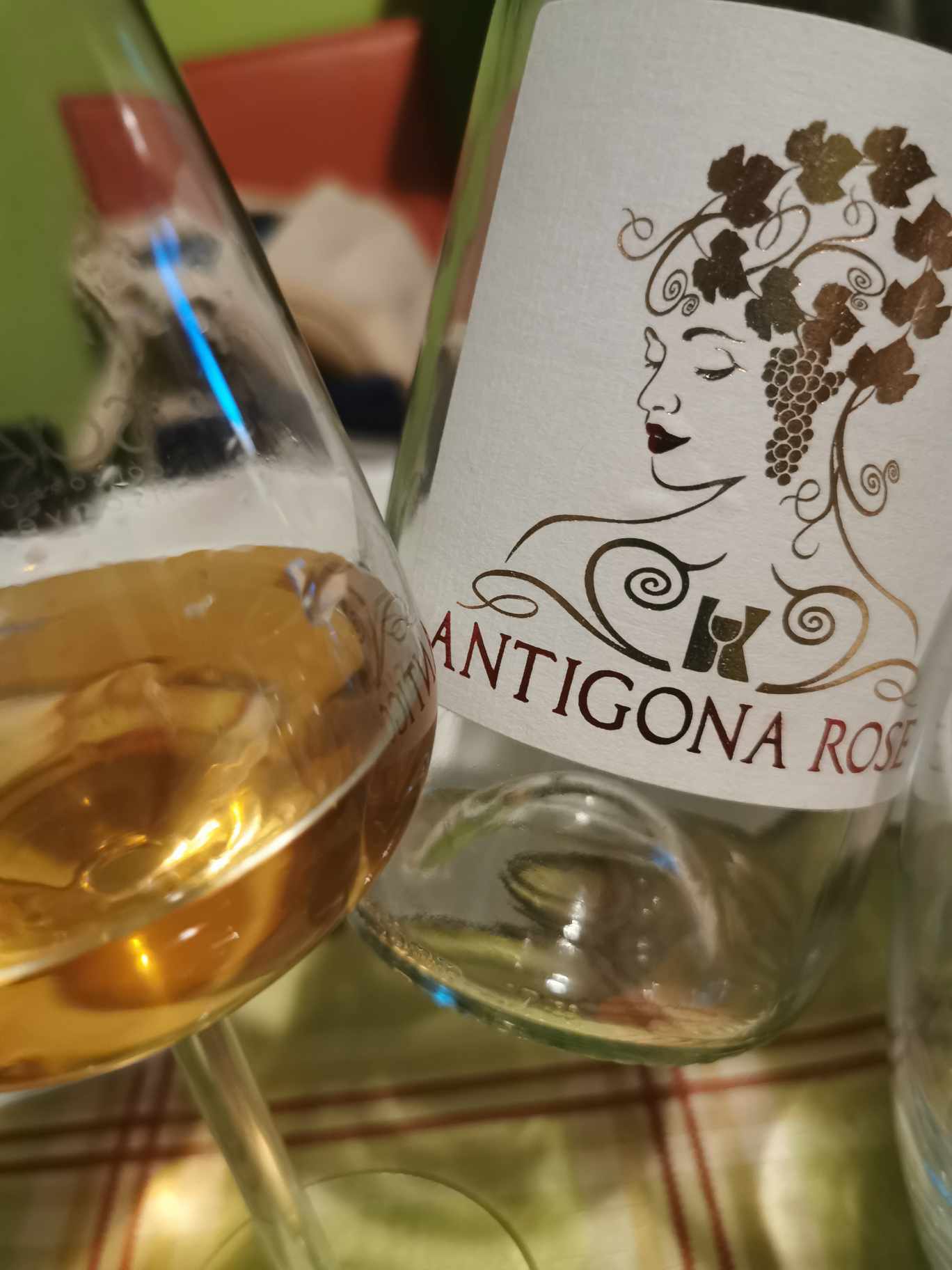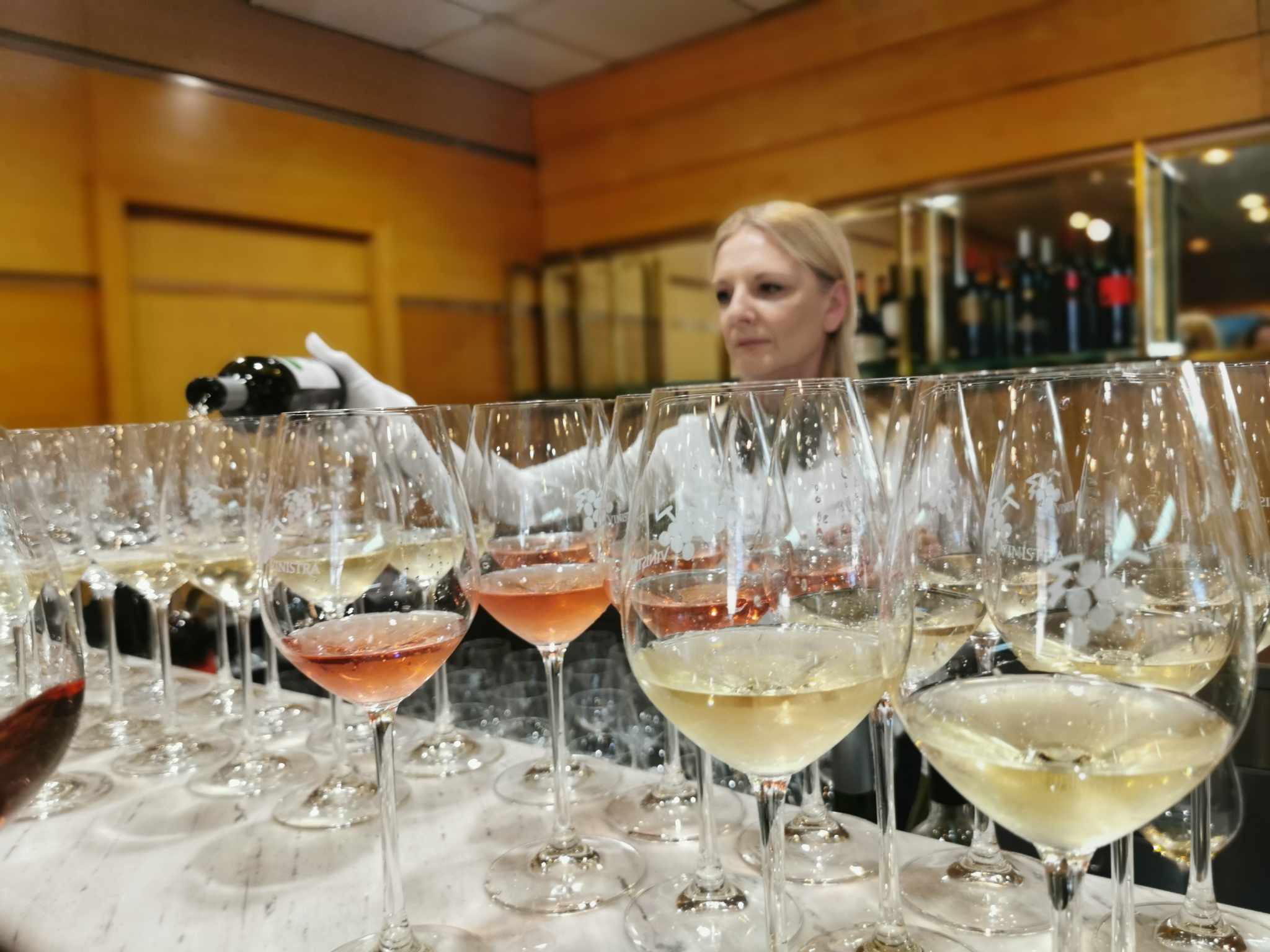News
News / 02/08/2021 / 1990
Cabernet Sauvignon has significant presence in Serbian vineyards. In 2019, it was on the third place in terms of vineyard surface and it is found in almost all wine regions of Serbia. However, in the last decade, Cab from Negotinska Krajina excels owing to its quality and distinct character.
Hardly anyone gets stirred up at the news that some Cabernet from Negotin scored well at an international wine competition. Wineries such as Matalj, Bukovo Monastery, Vimmid, Dajić or Tanića Pimnice continue to win awards and medals, whilst they strive to define identity of Cabernet Sauvignon from Negotin despite the fact that the variety does not have historical roots in Negotin region. This region differs from other parts of Serbia because grape varieties such as Gamay and Semillon can be found there. If we speak about autochthonous varieties, Black Tamjanika has been preserved, mostly thanks to the efforts of monks in Bukovo monastery.
 If, by some miracle, there was the possibility of time travel, the French wine merchant who did business in Negotin at the end of the 19th century and bought huge stocks of wine and transported them to Sète, Nantes, Bordeaux and other French ports, would be quite surprised nowadays with grape varieties present in the vineyards of Negotinska Krajina. He would have been surprised as well by the situation with wine industry in Negotin, which is only a small fraction of former glory. Namely, from more than 10,000 hectares of vineyards in Negotin and its surroundings (according to the data from 1889 left to us by René Millet, the French consul in Serbia), the vineyard surface in the region has dropped to approximately 260 hectares of vineyards planted with wine grapes.
If, by some miracle, there was the possibility of time travel, the French wine merchant who did business in Negotin at the end of the 19th century and bought huge stocks of wine and transported them to Sète, Nantes, Bordeaux and other French ports, would be quite surprised nowadays with grape varieties present in the vineyards of Negotinska Krajina. He would have been surprised as well by the situation with wine industry in Negotin, which is only a small fraction of former glory. Namely, from more than 10,000 hectares of vineyards in Negotin and its surroundings (according to the data from 1889 left to us by René Millet, the French consul in Serbia), the vineyard surface in the region has dropped to approximately 260 hectares of vineyards planted with wine grapes.
It was he who reported that until 1889, only Serbian wines from Negotin had been known in France. Wine merchants from Bordeaux particularly appreciated quality of Negotin wines, emphasizing that they were suitable for blending with other wines because of high content of tannins, sugar and alcohol. Therefore, the wine didn't lose its properties during long periods of transport by boat.

René Millet also described that Negotin had access to the port of Radujevac, which lies on the Danube below Djerdap canyon, and during the high tide, large ships were often seen in that port. In May 1888, two steamboats with a capacity of 600 tons each came to Radujevac. The first, "Unitas", was a Norwegian steamer rented by a French wine merchant. In the port of departure, she was loaded with empty sacks previously brought from England and with empty barrels loaded in Nantes. The voyage from Nantes to Radujevac lasted about 25 days, including three days stay in the port of call to renew coal supplies. Another ship called "Liberté" arrived from France and carried shipload of wine back to that country.

Therefore, wine from Negotin region has been well-known for its quality, both in the past and nowadays. This is supported by favorable climate and large water surface of the Danube River which intensifies the effects of the sun because the rays are reflected from the water surface. The river is also important because it alleviates extreme and sudden temperature fluctuations in the winter and protects vineyards from dangerous frosts. But, to what extent do today's wines from Negotin resemble those wines of the past that were exported in the 19th century all over West Europe? Has the selection of grape varieties in the vineyards there changed drastically? Has the choice of grape varieties from the past been lost forever for contemporary wine lovers?
Two years before the arrival of phylloxera, in 1874, local vineyards in Negotin were typically mixed. The tradition of the region was to plant 10-15 varieties together in the vineyard. The reason has always been very pragmatic. This reduces the effect of a bad year because some variety will always show its quality regardless of the weather conditions, so the wine will show acceptable quality even in a bad year. On the other hand, mixed vineyards made the harvest much more difficult because different varieties ripen in different periods of time, so part of the grapes would usually be unripe or overripe during the harvest.
During his tour of Negotin in 1874, M. Savić noticed that southeast of the city on the hills there were vineyards everywhere where Začinak was the most common variety on "the soil full of seashells", and alongside it, there were also Četereška (aka Skadarka) vines. However, in the old vineyards, together with these two varieties, grape varieties such as Tamjanika (small-berried and red), Zelenika, Dinka and Gračevina were planted to a considerable extent. In a letter written in 1886, Milorad Trojanović, a teacher at the Bukovo Viticultural School and a meteorological station attendant, stated that at the end of July, in the villages of Visoka and Lokva, grapes had already begun to ripen in the local vineyards, which is not surprising because there was a grape variety called Lipolist, while other grape varieties were in verison phase. From these descriptions, we can see how much the choice of grape varieties in the vineyards of Negotin has changed since then.
Začinak - Savić is quite praiseworthy when it comes to this grape variety. He points out that it accumulates a lot of sugar and wasps like to eat it, and it is also suitable for making wine from partially dried berries. In a blend with Skadarka, Začinak adds intense color to the wine. Začinak was widespread grape variety in Negotin region and it was particularly popular before the arrival of phylloxera. Its wines are strong, full-bodied, dark colored. Savić also mentions that in case he comes across some astringent, tannic wine from Negotin, it always turns out that such wine is made of 100% Začinak.
Skadarka - In Požarevac and Negotinska Krajina, this variety was known as Četereška. Apparently, it was named after the village in Braničevo district called Četereže. At the end of the 19th century, this variety was found everywhere in Serbian vineyards, as well as in Hungary. In Austria, it was known as "noble Hungarian grape". In Hungary and Austria, Skadarka was planted often with Portugieser which added color intensity to the blend. In Negotin region, Začinak played the same role of adding color intensity to the blend with Skadarka. Until the arrival of phylloxera, Skadarka was a highly valued grape variety with sweet must, from which a strong wine could be obtained, whilst Začinak added darker color and tannic structure to the blend.
Zelenika - In all probability, this is not the variety that is called Sremska Zelenika Crna (Seduša) on Fruška Gora. Zelenika was introduced into the local vineyards of Požarevac and Negotin because the local population confused it with Skadarka. But, when the variety started producing grapes, the result was very bad wine. It's quite productive, but the berries were extremely soft and rotted quickly, so they were unpopular. Local population would quickly root it out of the vineyard.
Mala Dinka - This variety was known as Dinka or Dinjka in Negotinska Krajina and Braničevo and was quite common. It was used both as a wine grape and as a table grape. It is assumed that it has arrived from the other side of the Danube, from Banat, because Mala Dinka stands out among all other grape varieties in Banat owing to its resistance in the vineyard and productivity, as well as good-quality light wine. It is noted that this variety was predominately found in the vineyards of Bela Crkva and Vršac.
Gračevina - Another variety that was not suitable for wine production. Small, watery berries, sour and without enough sugar. In addition, it's a productive variety. Fortunately, it was not excessively present in the vineyards of Negotin.
Tamjanika (small-berried/white and red) - Small-berried Tamjanika has always been a valued grape variety owing to its lush aromas. It was often harvested overripe to make the grapes as sweet and fragrant as possible. Tamjanika was added to the blend to enhance aromatic complex. Red Tamjanika was present in the vineyards stretching from Smederevo to Negotin. Savić mentions that this variety was somewhat rare in the past, so it was often the subject of theft in vineyards.
Lipolist - A variety that could be found in the entire Carpathian basin, ie in Hungary (Hárslevelű), Romania (Frunza de tei), Slovakia and Serbia. Nowadays, it is highly valued, especially in Hungary, where it is one of the noble varieties used to make Tokaj wines. In Serbia today, we find it on Fruška Gora.
The beginning of the 21st century on the global wine scene is marked by the return of indigenous varieties. All wine regions explore their wine history and varieties that were once (in the period up to phylloxera) represented in vineyards. Negotin region also has rich heritage and some of these varieties are certainly worth preserving and re-valorizing through wine production in a modern way. It's encouraging to see new vineyards of Bagrina and Četereška in Negotin, to witness renaissance of Začinak, whilst Black Tamjanika has already taken its place as a variety that is an indispensable part of the authentic wine region of Negotinska Krajina.

Tomislav Ivanović
Awarded wine writer, wine critic and contributor to selected wine magazines. WSET3-certified author and editor-in-chief of www.vinopedia.rs. Member of Vojvodina Sommelier Association. Juror in national and international wine competitions. Lecturing about wines of Serbia and the Balkans. Local partner of Wine Mosaic organization. Co-founder of International Prokupac Day.

Pročitajte i druge članke iz ove rubrike:


VINOPEDIA TOP 10 2024
PROČITAJ VIŠE


GIUAANI - VINSKI TURIZAM NA GRUZIJSKI NAČIN
PROČITAJ VIŠE


SPASIMO STARE VINOGRADE SRBIJE
PROČITAJ VIŠE


NAŠLI SMO ANTIGONU IZ ORAHOVCA
PROČITAJ VIŠE


SRPSKO VINO KOŠTA 100 EUR - I ŠTA ĆEMO SAD?
PROČITAJ VIŠE
Winner MILLESIMA BLOG AWARD 2016

Pobednik MILLESIMA BLOG AWARD 2016
VINO & FINO wine personality of the year 2016

VINO & FINO vinska ličnost godine 2016